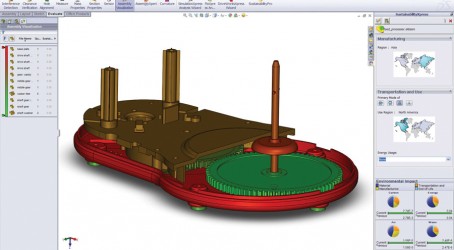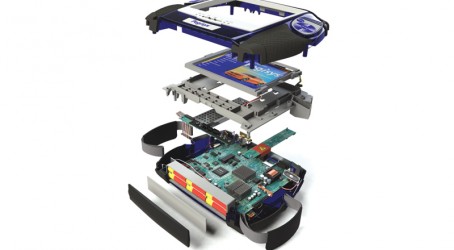Director of marketing innovations. It’s a grand title. But what do you actually do?
It’s my job to help come up with new product ideas at SolidWorks. I do that primarily by identifying opportunities based on customer needs. You can innovate in two ways: you can come up with the technology and try and wrap a product around it, or you can come at it from a different perspective that involves talking to customers. The latter is what I’m about.
Essentially, I look for opportunity in frustration. When engineers and designers get upset about things related to software, then my frustration radar kicks in and I start listening intently. My role is about articulating those opportunities, coming up with solutions, creating prototype software with the team of developers and then selling it internally. And every now and then I get to release a product. That’s the nature of innovation. You have a lot of false starts and failures, but also some great successes.
That’s a lot of listening. How do you actually go about teasing out the annoyances that engineers have with your software?
A The easiest way is through a series of surveys and interviews. It’s important to spend time with customers, so I do as much as I can face-to-face. I look for frustration. People enjoy talking about their problems.
I will ask them which part of their job they dislike the most. Which part do they find the biggest drag? I want to learn about these things, because for a company such as SolidWorks opportunity comes from just about anywhere in the working day of an engineer.
But SolidWorks has tens of thousands of users around the world. With so many customers, how do you see the wood for the trees?
A It does require a lot of patience. I listen, but I also try to direct the conversation. It’s about dissecting in real time what the person is telling me. Frustration comes when engineers have something that they need to accomplish, but there’s something out of their control getting in the way.
So it’s my job to press them on what they need to achieve, and to find out what prevents them getting things done. It’s that sort of line of questioning.
There’s no specific approach that works each time. It’s organic and it comes from observation.
When you think you have spotted an annoyance or grievance of note, what are the processes you use to sell that internally within SolidWorks?
A The most effective way is to get a couple of developers to work with me to build a prototype that illustrates the key components of what we are trying to achieve. We come up with the concept and we validate it. Then we do customer surveys and interviews. After that, we spend several months building a prototype before testing begins.
Then we put it in front of executives and say “this is what customers are saying, this is what the product looks like and this is the business we built around it”. The more tangible I can make the proposal, the better. The less I leave to the imagination of the executives, the better.


What have you been working on recently?
A I can only hint, but I’ve been looking at a new way of leveraging mobile technology. I’d like to think we can do something in this area that no one else has thought of before. That’s all I can say. The customer feedback has been fantastic, so I think there’s a high chance it will come to fruition. The internal feedback has also been great – everybody is feeling good about it. I hope that by the start of next year we will be talking about this product as a release.
Aside from leveraging mobile technology, what other business trends excite you?
I’m a fan of a New York-based company called Quirky, which uses social networking to develop new products. Quirky is employing a truly meritocratic approach to what it does. It’s up to the crowd, the community, and therefore the potential customers, to decide whether a product is moved forward or not. It’s not a political decision, it’s not about somebody else’s agenda, it’s about leveraging the crowd, or the market, in a good way to give a good indication of where to move forward. I love the fact that crowd-sourcing is a true meritocracy for product design.
What other new technologies do you think will start to have an impact on engineers?
SolidWorks is looking at all emerging technologies. Things such as tablets and smartphones, augmented and virtual reality, haptic systems – there are a whole load of interesting technologies.
CAD users typically go about what they do with a desktop computer or laptop, a keyboard and a mouse – that’s the same interface that has been used for a very long time. It has served us well.
But at the same time, it’s interesting to ask whether that’s an optimal way for engineers to specify information in a 3D manner. It’s my suspicion that in the next five to 10 years, what surrounds the engineer on his or her desk will really start to change and evolve.
Looking back, what new products are you really proud to have been involved with at SolidWorks?
The first one was the eDrawings 3D design-sharing and visualisation tool. That was an amazing experience, because eDrawings has gone on to be so successful. The eDrawings team was probably the best team I ever put together. They were smart people with amazing chemistry. I gave up that team to start working on something else later on, and I remember thinking you don’t know how good you had something until you don’t have it any more.
I was also proud of the Swift family of software tools. The premise behind it was to
allow novice users of CAD to experience some of the benefits that expert users enjoyed with the SolidWorks product. I’m really proud of what that product has managed to accomplish.
And what about the future? What new features will be included in 2013 product launches?
I don’t know. And I’m not being flippant. I’m actually quite disconnected from the main product process in the company – and that’s by design. I’m not held back by the concerns of the practicalities of delivering product. I don’t have any of those constraints. My job is to look at things in the free-est way possible.
Doesn’t that amount of autonomy make for pretty much the perfect job?
I’m spoilt, I know that. I am someone who likes to create things. So I’m truly lucky that I have this kind of job.